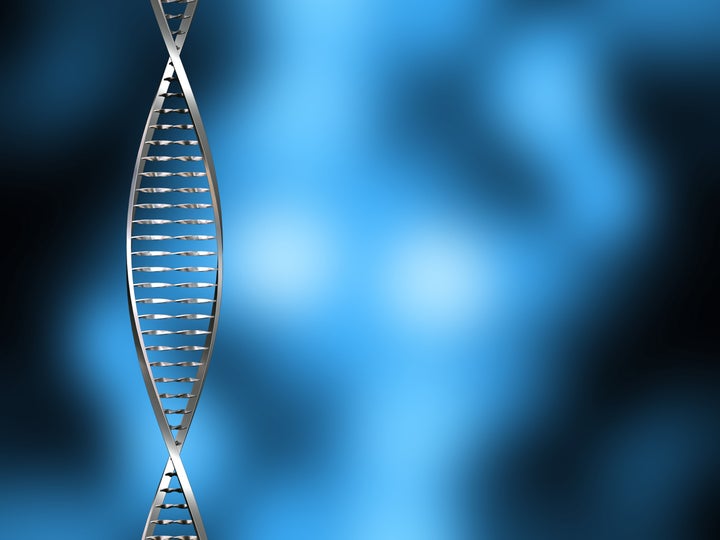
In a recent posting on his Why Evolution Is True website, "Jim Shapiro continues his misguided attack on neo-Darwinism," Jerry Coyne attacks me again. Let us examine some of his arguments.
1.
"[I]n one of his posts he explicitly uses a creationist trope:The first problem with selection as the source of diversity is that selection by humans, the subject of Darwin's opening chapter, modifies existing traits but does not produce new traits or new species. Dogs may vary widely as a result of selective breeding, but they always remain dogs.
This "guilt by association" argument (even though ID proponents call me a "crypto-Darwinist") does not make sense; the fossil record has little to say about "selection by humans," which was my subject.
2.
[W]e know of no evidence for mutations occurring nonrandomly or "adaptively", i.e., that the occurrence of mutations is somehow biased in a direction that makes them more likely to be favorable when they arise, particularly when the environment changes in a way that requires favorable mutations to fuel adaptive evolution. There has been some controversy about the occurrence of "adaptive mutation" in bacteria, but that's died out because there's simply no evidence that the phenomenon occurs.
"Adaptive mutation" is in fact alive and well in the sense that selection conditions induce (adaptive) mutagenesis carried out by well-documented natural genetic engineering agents: homologous recombination functions, mutator polymerases, and transposable elements. This has been documented in several species of bacteria and in yeast.
3.
In his latest columns at HuffPo, (Part 1 and Part 2), Shapiro makes the same mistake, assuming that some features of the genome -- the vertebrate immune system in this case -- shows that natural selection is ineffective in molding adaptive traits of organisms, and that the innate nature of the genome has really replaced the conventional view of adaptive evolution.
I did not write about evolution of the immune system. I specifically used well-documented immune cell events to illustrate cell capacities to target and regulate genome changes, sometimes in response to intercellular signals. Neither Coyne nor I know in detail how the immune system evolved. But it certainly is a gross error to use ignorance as the basis for asserting dogmatically, as he goes on to do, that it was "molded by a combination of random mutation and natural selection." This is yet another example of Jerry confusing his preferred theory with empirical evidence. (He repeats this unsubstantiated assertion later in his critique.)
4.
The amazing thing is how the body uses a small number of genes in the B cells to generate a huge variety of protective antibodies ... What happens is that there are two processes, called somatic hypermutation and VJ recombination, that take the DNA sequence of the antibody-producing genes and mutate it, either creating "errors" in the DNA sequence or swapping bits within and among genes by physical recombination. This generates a large number of variable antibody proteins.
There a few minor mistakes and one major omission here. "VJ recombination" is actually "V(D)J recombination." Jerry forgets to mention that it is a highly targeted process of successive DNA breakage and joining events that also includes the synthesis of novel DNA sequences inserted next to the D segments. Perhaps he omitted the D region in his description because the ability of cells to generate new DNA sequences does not fit in his worldview.
In discussing somatic hypermutation, the aspects I highlighted were 1) its activation in immune cells following antigen binding, and 2) its specificity for sequences that encode the antigen-binding regions of the antibody without altering the rest of the molecule. Such inducible, selective, targeted mutagenesis is not included in conventional neo-Darwinian explanations of mutations as "errors" (to use Jerry's terminology).
Finally, Jerry does not even mention the switching of antibody classes ("class switch recombination," or CSR). CSR was the subject that occupied the bulk of my second posting. The reason for this absence appears to be that targeting such natural genetic engineering by intercellular signals is antithetical to the "error" view of genome change.
5.
The key point is that there is no evidence that the evolution of the immune system in this way (by differential reproduction of individuals instead of cells) involved anything other than natural selection among individuals having randomly produced mutant variants of an ancestral immune system.
We will examine what we know about the evolution of adaptive immune systems in vertebrates in the future. There is not space now. Let me simply note here that a number of steps already discernible from genome sequencing are not plausibly explained by "randomly produced mutant variants."
6.
Note especially that in both the contingency loci of bacteria and the hypermutability loci of vertebrates, the mutations that occur are random: variants are produced regardless of whether they'd help the beleaguered vertebrate trying to destroy the antigens or the besieged bacterium trying to avoid antibodies.
Here again, Jerry fails to recognize that variations in "contingency loci" are not in any way random mutations. Instead, they involve well-defined natural genetic engineering systems: 1) targeted homologous recombination of coding cassettes (in eukaryotic trypanosomes as well as in bacteria); 2) site-specific recombination within protein coding sequences ("shufflons"); 3) insertion and excision of DNA transposons; and 4) mutation-prone reverse transcription and cDNA reinsertion to diversify specific variable regions of phage and bacterial coding sequences ("diversity-generating retroelements"). These examples simply reinforce the message of my two immune system blogs, namely that cells of all kinds are fully competent to engineer their genomes in well-defined (i.e., non-random) ways.
7. Although Jerry claims near the end of his diatribe that "all the facts are on my side" (always a dangerous position to hold), I think his omissions and theory-observation conflations argue differently.
Jerry, I think you need to do better next time. Please address my real arguments, not your own mischaracterizations.